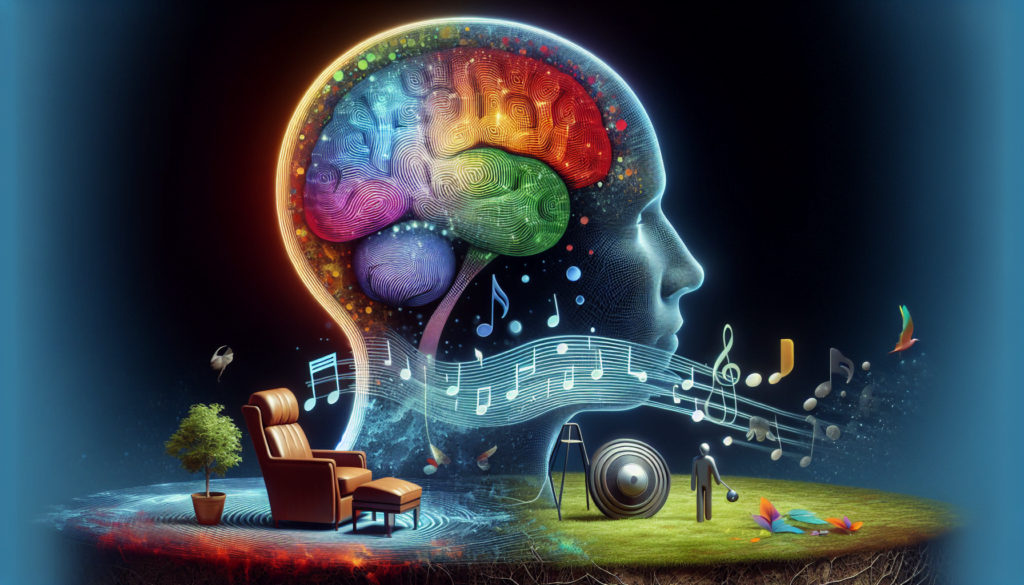Neurofeedback emerges as a beacon of hope in the realm of therapeutic interventions, offering a non-invasive route to mental wellness. By harnessing the brain’s own electrical activity, this technique empowers individuals to influence their neural rhythms and, consequently, their mental states. But the true potential of neurofeedback is unlocked when it is woven into a tapestry of complementary therapies, creating a holistic approach to healing that is greater than the sum of its parts.
Key Takeaways
- Neurofeedback can be integrated with various therapeutic modalities to enhance treatment outcomes.
- Combining neurofeedback with biofeedback, cognitive rehabilitation, and behavioral strategies can lead to more comprehensive care.
- A multidisciplinary approach, including nutrition and physical exercise, supports overall brain health.
- Personalized treatment plans that include neurofeedback are essential for addressing individual needs.
- Neurofeedback promotes neuroplasticity, aiding in recovery and long-term brain function improvement.
Introduction to Neurofeedback and Its Role in Therapy
Definition of Neurofeedback
Neurofeedback, also known as EEG biofeedback, is a therapeutic intervention that trains individuals to alter their brainwave patterns. It involves monitoring the brain’s electrical activity and providing real-time feedback to the user, facilitating the self-regulation of brain function.
Overview of APEX Brain Centers’ Approach to Therapy
APEX Brain Centers adopts a cutting-edge approach to therapy, integrating neurofeedback with a variety of other treatment modalities to optimize brain health and performance. Their comprehensive programs are tailored to meet the unique needs of each individual, ensuring that every client receives the most effective combination of therapies.
Importance of Integrative Treatment Plans
Integrative treatment plans are crucial because they address the multifaceted nature of mental health and cognitive disorders. By combining neurofeedback with other therapeutic approaches, practitioners can target multiple aspects of a condition, leading to more robust and lasting improvements.

Combining Neurofeedback with Other Modalities
Biofeedback
Similarities and Differences Between Neurofeedback and Biofeedback
While neurofeedback focuses on the brain’s electrical activity, biofeedback encompasses a broader range of physiological signals, such as heart rate and muscle tension. Both modalities involve monitoring bodily processes and using that information to gain control over them.
How They Complement Each Other
Integrating neurofeedback with biofeedback can enhance self-regulation skills, as individuals learn to control not just their brainwaves but also other physiological responses. This comprehensive self-awareness can be particularly beneficial for conditions like anxiety and stress-related disorders.
Cognitive Rehabilitation
Enhancing Cognitive Function Through Combined Therapies
Cognitive rehabilitation aims to improve cognitive functions such as memory, attention, and problem-solving. When paired with neurofeedback, which can fine-tune neural activity, the potential for cognitive enhancement is significantly amplified.
Case Studies or Examples
Case studies have demonstrated that combining neurofeedback with cognitive rehabilitation can lead to improvements in attention deficit hyperactivity disorder (ADHD) and traumatic brain injury (TBI), among other conditions. These integrative approaches often result in better outcomes than single-modality treatments.
Behavioral Strategies
Role of Neurofeedback in Behavior Modification
Neurofeedback can play a pivotal role in behavior modification by helping individuals understand and regulate the brain patterns associated with certain behaviors. This insight can be a powerful tool for change when used alongside traditional behavioral strategies.
Integration Techniques
Effective integration techniques might include using neurofeedback to reinforce positive behavioral changes or to reduce undesirable behaviors. This synergy can be particularly effective in treating conditions like addiction, where self-regulation is key (Neurofeedback and addiction treatment).

A Multidisciplinary Approach to Brain Health
Nutritional Counseling
The Impact of Nutrition on Brain Performance
Nutrition plays a critical role in brain performance, affecting everything from cognitive function to emotional regulation. When nutritional counseling is integrated with neurofeedback, clients can optimize their brain health through both diet and direct brain training.
Integrating Dietary Advice with Neurofeedback
By combining dietary advice with neurofeedback, therapists can help clients make lifestyle changes that support their neurofeedback training, leading to more effective and sustainable results.
Physical Exercises
Exercise as a Catalyst for Cognitive Enhancement
Physical exercise is well-known for its cognitive enhancement benefits, including increased neurogenesis and improved mood. When combined with neurofeedback, exercise can act as a catalyst, accelerating the benefits of brain training.
Combining Exercise with Neurofeedback Training
A regimen that includes both exercise and neurofeedback training can lead to greater improvements in cognitive function and overall brain health. This combination can be especially beneficial for aging populations and those recovering from neurological injuries.
Mindfulness Practices
Mindfulness and Neurofeedback for Stress Reduction
Mindfulness practices, such as meditation, have been shown to reduce stress and improve mental clarity. When used in conjunction with neurofeedback, these practices can help individuals achieve deeper states of relaxation and mental control.
Techniques for Incorporating Mindfulness into Therapy
Incorporating mindfulness techniques into neurofeedback therapy can involve guided meditations during neurofeedback sessions or teaching mindfulness exercises that clients can practice at home. This integrated approach can enhance the overall therapeutic experience.

Tailoring Treatments to Individual Needs
Personalized Therapy Plans
Assessment and Customization of Treatment
Each individual’s brain is unique, and so are their therapeutic needs. Personalized therapy plans begin with a thorough assessment, followed by the customization of treatment protocols to match the individual’s specific challenges and goals.
Monitoring Progress and Adjusting Protocols
Ongoing monitoring of progress is essential to ensure that the treatment remains effective. Adjustments to the neurofeedback protocols may be necessary as the individual’s brain patterns change and improve over time.
Case Studies
Examples of Personalized Integrative Therapies
Case studies illustrate the success of personalized integrative therapies in treating a range of conditions, from depression to cognitive decline. These examples highlight the importance of a tailored approach that considers the whole person, not just their symptoms (The impact of neurofeedback on depression and mood disorders).
Outcomes and Benefits
The outcomes and benefits of personalized integrative therapies are often profound, leading to improved quality of life, enhanced cognitive function, and greater emotional well-being. These successes underscore the value of a comprehensive, individualized treatment plan.
Promoting Neuroplasticity and Recovery
Understanding Neuroplasticity
Neuroplasticity is the brain’s remarkable ability to reorganize itself by forming new neural connections throughout life. This adaptability is at the heart of learning and recovery from brain injury.
Neurofeedback’s Role in Enhancing Neuroplasticity
Neurofeedback can significantly enhance neuroplasticity by encouraging the formation of healthy brainwave patterns. This can lead to improved cognitive function and resilience against neurological challenges.
Recovery of Brain Function
Post-Injury Rehabilitation
Neurofeedback can be a valuable tool in post-injury rehabilitation, helping to restore brain function and accelerate recovery. When integrated with other therapies, such as physical therapy, the potential for healing is greatly increased.
Management of Neurodevelopmental Disorders
Neurofeedback has shown promise in managing neurodevelopmental disorders like autism spectrum disorder (ASD) and attention deficit hyperactivity disorder (ADHD), particularly when combined with behavioral and educational interventions (The different types of brainwaves targeted in neurofeedback therapy).
Long-Term Benefits of Integrated Therapeutic Techniques
The long-term benefits of integrated therapeutic techniques, including neurofeedback, extend beyond immediate symptom relief. They promote a healthier, more adaptable brain, capable of facing future challenges with resilience.
In conclusion, the integration of neurofeedback with other therapy approaches represents a paradigm shift in the treatment of mental health and cognitive disorders. By embracing a holistic, multidisciplinary strategy, therapists can offer their clients the best chance for recovery and long-term wellness. As research continues to uncover the synergistic effects of these combined therapies, the future of mental health treatment looks increasingly bright and hopeful.
Unlock Your Brain’s Potential: Neurofeedback and Therapy Integration FAQs
What is neurofeedback and how does it work?
Neurofeedback is a type of biofeedback that uses real-time displays of brain activity—typically through EEG—to teach self-regulation of brain functions. By observing their brainwave patterns, individuals can learn to control or alter their brain activity. This is achieved by providing visual or auditory feedback to the user when their brainwaves reach desired states, which can help in treating various psychological and neurological conditions.
Can neurofeedback be integrated with traditional psychotherapy?
Yes, neurofeedback can be integrated with traditional psychotherapy. This combination allows therapists to address psychological issues both through cognitive and behavioral techniques, as well as by directly influencing brain activity. This integrative approach can enhance the effectiveness of treatment by targeting both the conscious processes and the underlying neurological functions.
What types of therapy can be combined with neurofeedback?
Neurofeedback can be combined with a variety of therapeutic approaches, including cognitive-behavioral therapy (CBT), mindfulness-based therapy, psychodynamic therapy, and more. The choice of combination depends on the individual’s needs and the nature of the issues being addressed.
Is neurofeedback safe to use with other therapies?
Neurofeedback is generally considered safe and non-invasive, making it suitable to be used alongside other therapies. However, it’s important to have a trained professional oversee the process to ensure the correct protocols are followed and to monitor the individual’s response to the treatment.
What conditions can benefit from the integration of neurofeedback and other therapies?
The integration of neurofeedback with other therapies can benefit a wide range of conditions, including ADHD, anxiety, depression, PTSD, sleep disorders, and brain injuries. By addressing both the psychological and physiological aspects of these conditions, the combined approach can lead to more comprehensive and lasting improvements.
How long does it take to see results from neurofeedback and therapy integration?
The time it takes to see results from neurofeedback combined with therapy varies depending on the individual and the specific conditions being treated. Some individuals may notice improvements within a few sessions, while others may require a longer course of treatment to achieve the desired outcomes.
Are the effects of neurofeedback and therapy integration long-lasting?
The effects of integrating neurofeedback with other therapy approaches can be long-lasting, especially when individuals continue to apply the self-regulation skills they’ve learned. Maintenance sessions and ongoing practice may be recommended to sustain the benefits over time.
Can children and adolescents undergo neurofeedback with other therapies?
Children and adolescents can undergo neurofeedback in combination with other therapies. It is often used to treat conditions such as ADHD, behavioral issues, and anxiety in younger populations. As with adults, it is important to have the treatment conducted by a trained professional who specializes in working with these age groups.
What should I look for in a practitioner who offers neurofeedback and therapy integration?
When seeking a practitioner for neurofeedback and therapy integration, look for someone who is certified in neurofeedback and has a strong background in mental health treatment. They should have experience in integrating neurofeedback with the specific type of therapy you are interested in and be able to provide evidence of their efficacy in treating similar cases.
Is neurofeedback with therapy integration covered by insurance?
Coverage for neurofeedback combined with therapy varies by insurance provider and plan. Some insurance plans may cover neurofeedback as part of mental health services, while others may not. It’s important to check with your insurance provider to understand what is covered under your specific policy.



